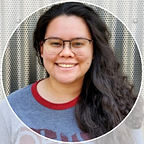Interactive Co-Design Sessions for Customer Research— Part 1: Designing a Co-Design
Written by Langley Vogt
Edited by 99P Labs
Langley Vogt is a graduate student of the Integrated Innovation Institute at Carnegie Mellon University. She is currently pursuing her Master’s Degree in Integrated Innovation for Products and Services, Advanced Study.
Purpose and Overall Co-Design Goals
The goal of a co-design session is to have a small team conduct an interactive interview with multiple participants who fit within the project’s demographics. The goal is to have them discuss their past experiences related to the research to discover and/or validate user needs. For this discussion, the co-design tool described in the following post was utilized in the earlier research and customer validation stages to aid in market positioning research. Additionally, these sessions can be conducted after physical products and services are developed to get feedback from real customers for improvements. However, our goal was to gather insights from the participants in the early stages to pivot earlier rather than later.
In comparison to a survey that would be crafted to be short and gather large amounts of quantitative data to analyze, this activity is designed to uncover pain points and opportunities for improvements in a free-response form when discussing the general problem space.
Questions & Format
In order to design this co-design to be efficient and useful to us, the team brainstormed as many “unknowns” related to information and topics we needed to further understand, and questions that could lead to users discussing what was lacking or missing in their experiences. Using an online collaborative tool, the team was able to write many questions on virtual post-it notes that were later categorized into clusters dependent on the overall purpose of the question (i.e. potential customer needs versus where our solution would be positioned in the market landscape).
Co-Design sessions can be designed in countless ways, whether it is in-person or virtual. It is recommended that the session not be too long for the sake of the interviewee volunteering their time (and to force questions to be succinct and not repeated). To help come up with a variety of questions to ask the participant, we listed the types of ways the participant can illustrate and communicate their answers. For example, you can ask the participant to detail out a specific event in a journey map format where the hope is to uncover the good and the bad points during a specific experience they would recall and where opportunities for improvement may exist. The participant would explain or write-in what happened in a certain time frame by walking through their series of events and their actions, along with their emotions and how they felt during each step. If the journey map is too free-form or not the right fit for the information you need, you could have the participant fill out a timeline with pre-defined segments of the experience you would like them to recall. You could also set up a specific scenario for them to understand their thought process (i.e. if they went to a store to buy something, what is their process for choosing a specific item?).
We strived to make the session as interactive as possible and easy for the participant to express their actions and emotions. Letting them drag and drop icons (or placing/taping them if in a physical setting) onto the journey map/timeline not only makes it easier for them to recall what they used or did, but may lead them to remember other resources they utilized.
Once a variety of questions are generated, categorized, and the different approaches to the co-design have been thought through, the next step is to consolidate the questions, edit and choose the ones that would be best for the session. Our team decided for our mobility project, a combination of choosing activities (how and when they interact with them with customized icons), a scenario timeline asking them to recall an exploration experience, and free response questions would let us get the most out of
the 45 minute session.
The most helpful way we chose and reworded the final questions was to write down the corresponding learnings to all the questions we had generated and the assumptions. These were noted to maintain direction and purpose with every question being asked, and also help us be aware of biases and circumstances that the question may be asked under. Although you want the participant to speak freely about their thought processes and emotions, the session itself needs to be structured so they have guidance, their time is respected, and you have enough time for each portion of the session.
In Part 2, we will discuss writing the session protocol and creating interactive content.
Follow our Medium page for this co-design series and other innovation practices! You can also check out our website to learn more about Student Innovation at 99P Labs.
